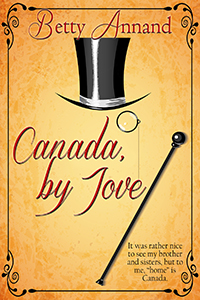Find Gold Digger Among Us and Eden Monroe's other books, here:
https://bookswelove.net/monroe-eden/
Never approach a bull from the
front, a horse from the rear, or a fool from any direction.
A
cowboy saying
* * *
If ever there was a romantic symbol
of freedom, it’s the cowboy and his undisputed mastery over untamed, wide-open
spaces.
As for the job description of a
cowboy, that actually originated in Mexico, when, in the early 1500’s, Spaniards
imported horses and built ranches to raise livestock in the Americas. Those
early cowboys were known as vacqueros from the Spanish word vaca, meaning cow.
They were herdsmen, overseeing enormous herds of cattle and in the process of
tending them became expert horsemen, as well as outstanding ropers, skills that
are still in demand today by cowboys working cattle from the back of a horse or
competing in rodeos.
As time passed the size of cattle herds
on the North American continent grew exponentially, spreading across the
American west and ultimately the Canadian west. At the centre of that bovine
tidal wave were the cowboys who handled them. Also called cowhands, cowpokes,
cowpunchers or buckaroos, theirs was an often lonely and always demanding
lifestyle, time spent on the open range and in cow camps, or on ranches, with
plenty of hard work and long hours for little pay. They distinguished
themselves by their fierce devotion to the work they loved, living by the
unspoken cowboy code, or the code of the west, that included living each day
with courage, taking pride in what they did, being tough but fair, and knowing
where to draw the line.

As the legend of the cowboy grew,
so did the lure for this romanticized lifestyle that saw men come from many walks
of life and a variety of ethnic backgrounds to embrace it. African American cowboys
also made their mark, such as Bill Pickett (cowboy, rodeo, Wild West show
performer and actor) from Texas who is credited with inventing bulldogging, or
steer wrestling as it’s also called. Unmarried Jewish men primarily flocked to
the west (1849-1899) in such numbers to become cowboys that this period in
western history is referred to as the third golden age of Jewish history. High-profile
western lawman Wyatt Earp married a Jewish woman, Josephine Marcus, and they’re
buried side by side in the Jewish Hills of Eternity Memorial Park in Colma,
California.
Today cowboys, while popularized in
American and Canadian western culture, are found in many parts of the world,
including on the continents of Africa and Australia. It’s not only the distinctive
broad-brimmed hat, boots and chaps that define the cowboy, the measure of the
man has always been what’s in his heart.
Cowgirls are also part of the
legend, including such notables as sharp shooter Annie Oakley (1860-1926) whose
real name was Phoebe Ann Moses (some historians say Mosey) Butler. These women
take a back seat to no one, strong, resilient and daring as they continue to
carve their own special niche in history.
Often glamorized and always
respected, every cowboy, either real or fictional, has a story to tell. Enter
Dade Tanner, cowboy and cattle rancher. Rugged, dark and sexy, he sits tall in
the saddle as he rides herd over an edge of your seat romantic suspense in Gold
Digger Among Us, where anything can … and does … happen:
Gold Digger Among Us - Excerpt
“Finding
an empty spot on one of the logs, Dade settled into it and was totally taken by
surprise when the bold brunette who’d earlier grabbed at his sleeve, plunked
herself happily in his lap. He’d suffered worse fates. She was pretty and
making it very clear what she wanted from him as he got an impromptu lap dance
to the tune that was playing on Maynard’s truck stereo.
“Hey, Sarah,” she yelled to the woman who’d been sitting beside
her on the log, “I got me a cowboy….”
Faithful to the tradition of what
it means to be a cowboy, Dade was born to that way of life, and he’s cowboy to
the core:
“He leaned
one shoulder nonchalantly against the doorjamb with thumbs hooked through his
belt loops - the dust from the back corral still evident on his chaps. The sun
glinted brilliantly against silver conchos on their flared outer flaps above
his scuffed cowboy boots. He shifted his position slightly, a spur jingling
against the doorsill.
‘You’re right, it is hot out there,’ he agreed at
length, but with more warmth. ‘Maybe I’ll see you at the dance tonight.’
He studied her for a moment longer before leaving, his
eyes unreadable from beneath the brim of his Stetson.”
Dade Tanner is as cowboy tough as
they come, and just as purposeful when he climbs down off his horse. Kerrah knows.
She’s the woman he loves:
“Dade’s bedroom was in darkness as
he laid her on a hand-worked quilt. Shafts of moonlight captured him in a
flawless silhouette as he stood by the bed, slowly taking off his shirt. Cowboy
of the year the polished silver buckle read as the worn leather belt glided
past the last notch and hung open. Weather-browned hands unhurriedly released
the metal button atop the faded denims.”
Independent and determined, Dade too
lives by the unspoken cowboy code. He finishes what he starts and as anyone who
knows him will say, he’ll always do what needs to be done and remain true to
himself. Yes, Dade Tanner is a cowboy with a story to tell, one you won’t soon
forget.
For more on Eden Monroe and her Emerald Valley Ranch series visit her BWL Publishing Author page
https://bookswelove.net/monroe-eden/























